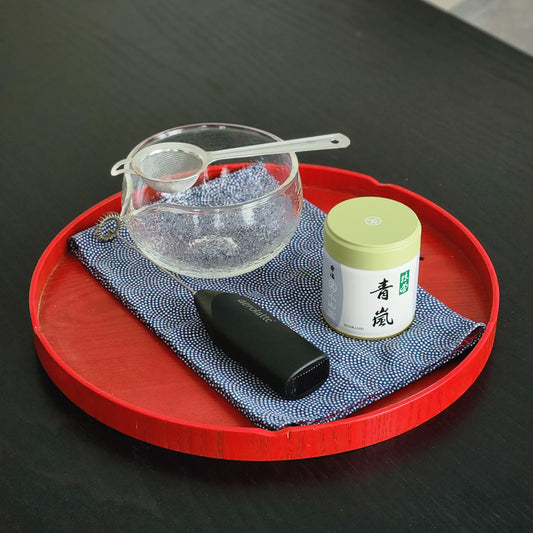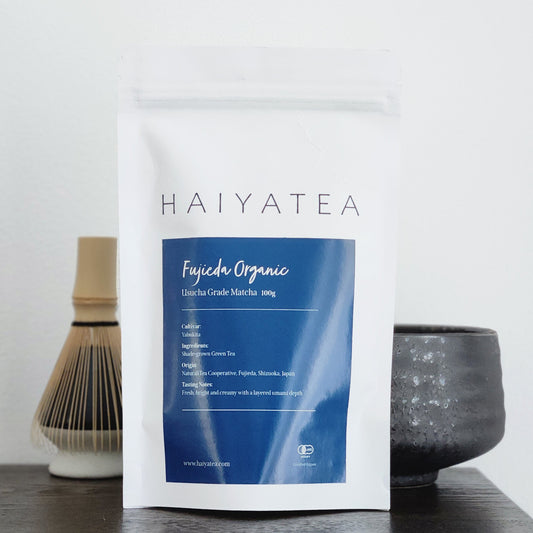Matcha, the vibrant green powdered tea, has gained popularity in recent years due to its unique flavor and numerous health benefits. But have you ever wondered how matcha is grown and why it is shaded? In this blog post, we will explore the fascinating process of matcha cultivation and the reasons behind shading the tea plants.
How is Matcha Grown?
Matcha is derived from the leaves of the Camellia sinensis plant, the same plant used to produce other types of tea such as green tea, black tea, and oolong tea. However, the cultivation process for matcha differs significantly.
The leaves intended for matcha are called Tencha and are typically shaded for 3 weeks prior to harvest, which we will discuss in more detail later. The shading process stimulates the production of chlorophyll and other beneficial compounds, resulting in the vibrant green color and unique flavor of matcha.
Before harvesting, the tea plants are carefully tended to ensure optimal growth. Farmers meticulously prune the plants to encourage new leaf growth and prevent overcrowding. This allows for better air circulation and sunlight exposure, promoting the development of tender and flavorful leaves.
Once the tea leaves have reached maturity, they are hand-picked by skilled farmers (at least in the case of top quality matcha). Hand-picking ensures that only the youngest and most tender leaves are selected, as these contain the highest concentration of nutrients and flavor compounds.
After harvesting, the leaves undergo a meticulous process of steaming, drying, deveining, and grinding the soft. tissue to produce the fine powder we know as matcha. This process helps retain the vibrant green color and preserves the nutritional content of the tea leaves.
Why is Matcha Shaded?
Shading is a crucial step in matcha cultivation that sets it apart from other types of tea. About three weeks before the harvest, the tea plants are covered with nylon sheets or bamboo mats to block out around 90% of the sunlight. This technique, known as "shading," has several important benefits:
Enhanced Chlorophyll Production: Shading stimulates the tea plants to produce more chlorophyll, the pigment responsible for the vibrant green color of matcha. Increased chlorophyll levels not only contribute to matcha's distinctive hue but also enhance its nutritional profile.
Reduced Catechin and Tannin Levels: Shading reduces the amount of sunlight the tea plants receive, which in turn decreases the production of catechins and tannins. These compounds are responsible for the bitter taste often associated with green tea. By shading the plants, the roots have to work harder, making t hem thicker and starchier, therefore matcha achieves a smoother and more mellow flavor.
Increased L-Theanine Content: L-Theanine is an amino acid found in tea leaves that promotes relaxation and mental clarity. Shading the tea plants increases the production of L-Theanine, resulting in matcha's unique calming and focused effects.
Protection from Direct Sunlight: Shading provides protection for the delicate tea leaves from direct sunlight, preventing them from being exposed to excessive heat and potential damage. This controlled environment allows the leaves to develop their flavors and nutrients more evenly.
Overall, the shading process plays a vital role in shaping the characteristics of matcha, including its vibrant color, smooth flavor, and unique health benefits.
Next time you enjoy a cup of matcha, take a moment to appreciate the intricate process behind its cultivation. From the careful pruning of the tea plants to the shading techniques used, every step contributes to the exceptional quality and flavor of this beloved powdered tea.
If you'd like to step into the world of high-quality matcha, click here





